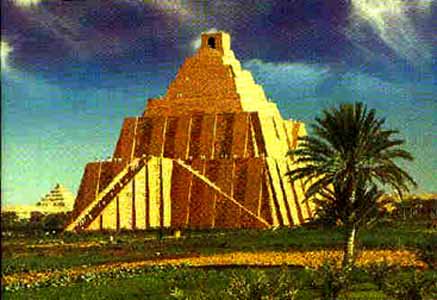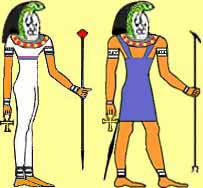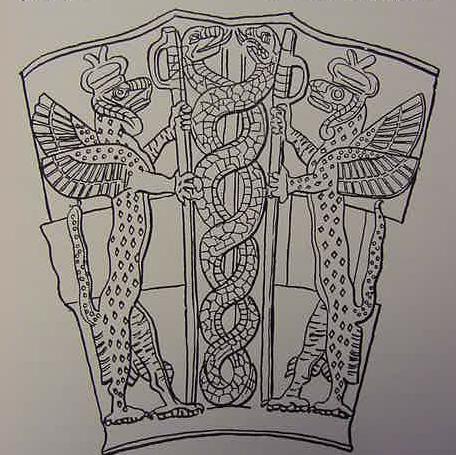You may or may not remember in the last blog post we looked at a small section of Alien species and races that have made contact with us here on our little blue planet: Earth.
One of these alien races we looked at was the Anunnaki, a race of reptilian shape shifters. I mentioned last time, almost in passing, there is a school of thought that the Anunnaki have not only made contact with humanity but that they are here, living amongst us, influencing, controlling, manipulating and shaping the course of human history and civilization and have been for thousands of years.
This raised many eyebrows over on Twitter (@MarkMauvais if your not already following). There are of course many people who argue this is just a wild conspiracy theory. So we shall now look at some of the evidence that has been put forward for this case of reptilian overlords secretly ruling the world.
Where better to start than with the origin of the word Anunnaki? The word actually means the offspring of Anu and Ki, two ancient Sumerian deities. The word Anunnaki is actually over 5000 years old.
The ancient Sumerians believed that Anu, and his wife Ki, were reptilian humanoids who descended from Heaven to bestow knowledge on to humanity. Anu is described as a sky-god, the god of heaven, lord of constellations, king of gods, spirits and demons, and dwelt in the highest heavenly regions. In fact a great number of the Sumerian gods were reptilian.
Interestingly the arrival of the Anunnaki, in the third millennium before Christ, coincides with a number of humanities greatest technological advances. Until this point in history humans had been a nomadic people, moving from place to place following the animals they hunted for food using stone tools. This had been the way for hundreds of thousands of years, then suddenly out of nowhere everything changes.
Boom. Agriculture. It seems like nothing significant to us in the modern age but this was the first example in history of humans manipulating nature, harvesting the earth, for its own needs. The first time on earth, ever, no other animal farms or grows its own food and till this time no human on earth had either. It was a game changer. No longer did people have to follow the food, the food grew right outside. The Sumerians became the first people to "write" using pictographs. Bronze replaces stone as the go to material for tool building as the bronze age begins and settlements, towns and city states begin to appear as well as the construction of mega-structures known as Ziggurats.
Could the Anunnaki be responsible for these great leaps forward? Could these reptilian aliens have bestowed this knowledge on humanity? Well its not the only example of reptilians passing knowledge to humans, its a recurring theme in a number of ancient cultures and myths, not just in Sumeria but ALL around the world, between societies that had zero contact with each other.
Come with me now, for a moment, if you will, to the other side of the world to ancient Mesoamerica. There is no way on Earth that the Olmecs, Aztecs, or Mayans could have had any interaction with ancient Sumeria as the Americas were only discovered some 600 years ago...
The image of the serpent is prominent in the Mesoamerican religions and myths. There are a number of reptilian gods in the Olmec, Aztec and Mayan belief systems. The first of these Mesoamerican gods is Mixcoatl, god of the stars and the heavens whos name translates as "cloud serpent". Then we come to Coatlicue, the "mother of the gods" She is represented as a woman with a wearing a skirt of writhing snakes and a necklace made of human hearts, hands, and skulls. Her feet and hands are adorned with claws. Or there is Quetzalcoatl who's name literally translates to "feathered serpent" a god of agriculture, culture and civilization.
Notice a connection? Serpents from the heavens bringing knowledge of agriculture and technology? Perhaps my favourite example of these serpents descending from the heavens in the Mesoamerican faiths can be found at the site of mega-structure Chichen Itza in Yucatan, Mexico.
The Mayans, who built Chichen Itza, had a great depth of knowledge regarding astronomy, about outer space and the universe. They knew for example that Venus appeared on the western and disappeared on the eastern horizons at different times in the year, and that it took 584 days to complete one cycle. They also knew that five of these Venus cycles equaled eight solar years. Their calender is one of the most famous in history.
I digress...
Back to reptilians. What's amazing about Chichen Itza is what happens to the building during the spring and fall equinoxes. The shadow cast by the angle of the sun and edges of the nine steps of the pyramid combined with the northern stairway and the stone serpent head carvings create the illusion of a massive serpent descending from the sky down the side of the pyramid.
On the other other side of the world, another as yet undiscovered continent Australia the native aboriginal people also believed in a number of reptilian lizard and serpent gods, the most famous of which is the Rainbow Serpent. Adnoartina is known as the lizard guard of Uluru, or Ayers Rock. The aboriginal peoples of Australia living around Uluru tell numerous legends about Adnoartina and other lizards that emerge from the rock.
Sadly much of the information about the aboriginal religion has been lost, as was much of the mesoamerican religious history (thanks to Spanish invaders destroying everything!) but everywhere we look this same imagery appears in every religion around the world since the beginning of time. From the original Anunnaki in ancient Sumeria, through Mesopotamia, Egypt, Africa, Ancient Greece, the Roman Empire, Norse, Hinduism, Ancient China, Japanese, Native American, Aztec, Incan, Mayan literally the reptiles are everywhere.
The Ancient Egyptians had a polythiestic religion and their gods were numerous. Each one had their own “story” and identity, with some of the most well known being Horus, Isis, Seth (or Set), Anubis and Ra. Most of these Gods were depicted as half human and half animal, with the reptile being one of the most common.
Yet another interesting account of a reptilian race found in Hinduism, Buddhism, and Jainism comes from the nations of India, China and the far East. In a Cambodian legend, the nāga are described a reptilian race of beings or 'heavenly kings' who possessed a large empire or kingdom. The Nāga came to earth and bred with the local human population, giving birth to a docile hybrid race of workers and slaves: the Cambodians. That's not me being racist... its their legend! It is believed that a number of the pure breed Nāga are still living here on Earth in secret. Some are water-dwellers, living in streams or the ocean; others are earth-dwellers, living in underground caverns.
And all that before we even get to probably the most famous reptilian in all religion.... A link between the Anunnaki and the Abrahamic faiths: Judaism, Christianity and Islam.
All three of these faiths are interconnected in their origin and include the same stories, myths and legends about the same prophets. The Torah, the Jewish holy book makes up the first five books of the old testament in the christian bible. The new testament, which details the life of Jesus, is where Christianity picks up and carries on the story from where the Jews left off. Finally the Quran is often referred to as 'The Final Testament' and represent a third episode in the Abrahamic trilogy.
The Reptilian in these religions to which I am of course referring to the infamous Serpent in the Garden of Eden. The book of Genesis describes how a serpent with legs manipulated Eve into eating the fruit of the Tree of Knowledge. A serpent with legs? or an Anunnaki? Notice once again the correlation between the reptile and the acquisition of knowledge? Nachash, the Hebrew word for "snake", is often associated with knowledge of the future.
This image of the serpent and the tree of knowledge is again everywhere and brings us neatly back to ancient Sumeria. The Epic of Gilgamesh is one the oldest known books ever written. It was recorded on clay tablets in ancient Sumeria some 5000 years ago. It too features this very same image of the serpent and the tree of knowledge.
The Ningishzida is a Sumerian god who guards the gates of Anu's celestial palace. His name in Sumerian is translated as "lord of the good tree" and is the first example of this now famous image of the serpent wrapped around a rod representing the tree of knowledge. This image can be also seen in Ancient Greece as the staff of Hermes, or Mercury in Ancient Rome, even again in the bible again, this time as the staff of Aaron (brother of Moses).
Its interesting that we come back to the bible again, in this case the book of Exodus when Moses leads the Jewish people out of Egypt after liberating them from the tyrannical rule of the Egyptian Pharaohs (who themselves could have been Anunnakki hybrids). There is more serpent imagery in this book. When Moses is challenged by the Pharaoh to demonstrate the power of his god he throws a staff to the floor which transforms into a snake. The Pharaoh is unimpressed, his own magicians can do the same.
Also remember the Ziggurats? Those Ancient Sumeria mega structures? (not too dissimilar from Chichen Itza I might add) Well the building of these massive temples is also mentioned in the bible when one of them, in the city of Babylon is destroyed. The Tower of Babel. The bible says that the people of Babel were trying to build a tower "into the heavens".
I mean seriously, there is so many examples of lizard men and serpents coming from or living in the sky who part knowledge onto humanity. There is no way its a coincidence. Its such a common thread running through the DNA of all the cultures on Earth, there has to be a logical explanation for why this same imagery appears time and time again in cultures which had no contact between each other. If you have a better explanation I would love to hear it....















No comments:
Post a Comment